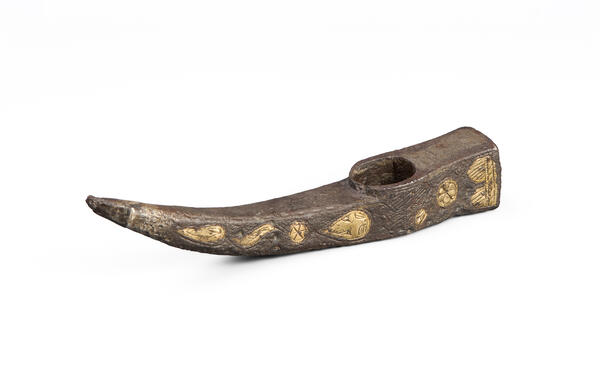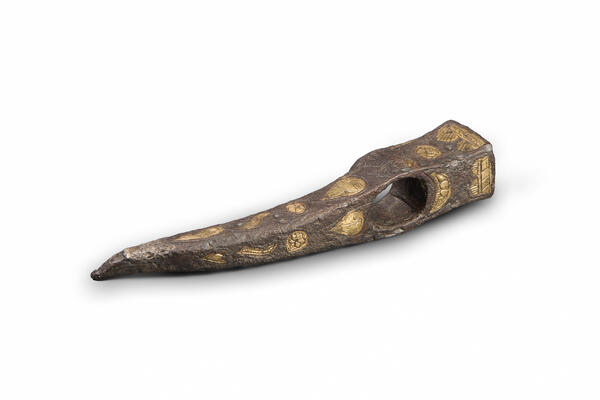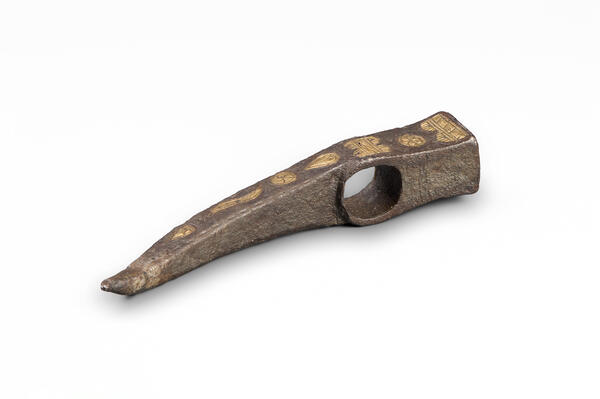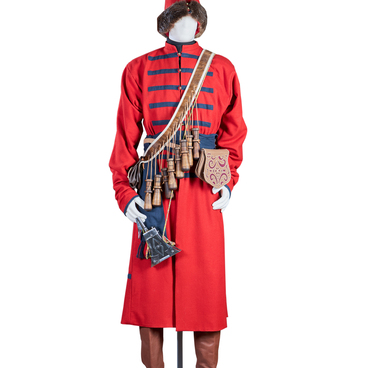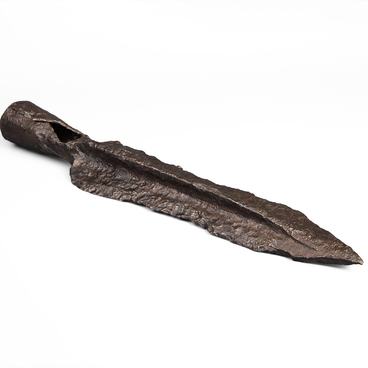The collection of the Belgorod State Historical and Local History Museum features a horseman’s pick. It was discovered in 1986 near the village of Priyutovka (now part of the Shebekino urban district of the Belgorod region).
A horseman’s pick is a close combat weapon in the form of a war hammer with a blade curved downwards. It received its Russian name klevets for the similarity of its blade to a bird’s beak (kluv).
A horseman’s pick belongs to ancient types of military weapons. With the spread of iron, it became possible to make the impact part of the pick slightly curved to match the trajectory of the impact, and the butt became equipped with a special hammer, which was also used for striking.
A horseman’s pick was capable of delivering blows that could penetrate reinforced armor. Thanks to this, the weapon gained popularity on the European continent during the era of plate armor. Initially, in European countries, the horseman’s pick had a long shaft and was used only in infantry. In the middle of the 15th century, the horseman’s pick was adopted in the cavalry, but with a shorter shaft. Gradually, the combat part increasingly acquired the shape of a bird’s beak, for which this weapon was nicknamed pico de сuervo in Spanish or bec de fauconin French, and klevetsin Russian.
A distinctive feature of the horseman’s pick was the presence of a small hammer-shaped protrusion on the opposite side of the beak, which made it an even more dangerous weapon. A hammer-shaped part could have a different impact surface: smooth, spiked, pyramidal, conical, with some kind of figure or monogram.
Instead of a hammer, the horseman’s pick could also be combined with an ax or a mace. It could stun, shell-shock the enemy and even pierce armor or shields in a poorly protected place, since the blow was concentrated on a very small area. The wounds inflicted by it were almost impossible to heal.
The disadvantage of this weapon was that, having pierced an enemy shield or helmet, the horseman’s pick inevitably got stuck, which turned it into a single-use weapon. In addition, the horseman’s pick was not suitable for deflecting blows. A blow delivered by a horseman’s pick was easy to repel.
By the 17th century, the horseman’s pick gradually
became a distinguishing item for military leaders in many European countries.
However, as a combat weapon, it was used until the 19th century in India,
Central Asia, and the Middle East. Warriors would take it on campaigns, placing
the tip downward in a loop attached to a button covered with morocco, velvet,
and embroidered with gold and silver.

